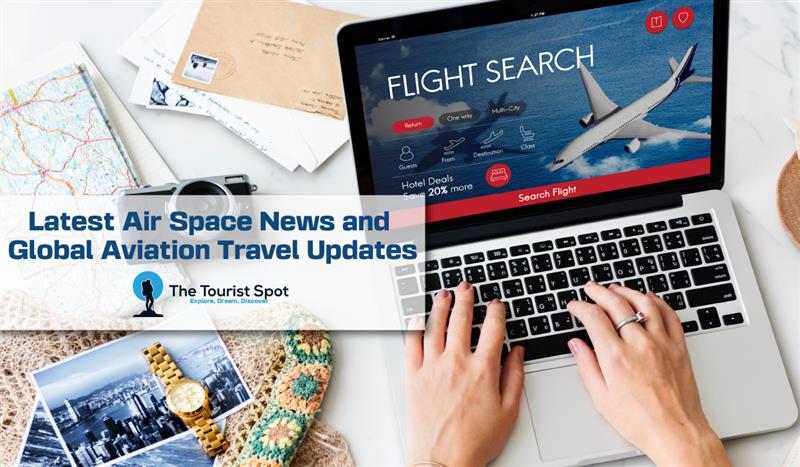The world of Air Space and aviation is evolving rapidly, driven by technological innovations, changing travel demands, and global events. Whether it’s new airline routes, advancements in aircraft design, or the latest international travel regulations, staying updated with the most recent air space developments is crucial for travelers, professionals, and enthusiasts alike.
Latest Air Space News and Global Aviation
As 2025 progresses, the aviation industry is witnessing major shifts that are shaping the future of flight and air travel. This comprehensive update covers key trends, recent news, and forward-looking changes across the global air space sector.
1. Increasing Passenger Traffic in Post-Pandemic Recovery
Airlines across the world have seen a significant rebound in passenger numbers, with international travel nearly reaching pre-pandemic levels. Airlines are expanding their route networks, and airports are upgrading their infrastructure to handle rising traffic.
Current Developments:
- Airlines adding more direct international routes
- Surge in summer travel bookings
- Growth in regional air travel within Asia, Europe, and Africa
This rebound is strengthening the global economy and reconnecting people across continents.
2. Expansion of Sustainable Aviation Fuel (SAF)
One of the most pressing issues in the Air Space industry is sustainability. Airlines are investing heavily in Sustainable Aviation Fuel to reduce carbon emissions and meet environmental targets.
Key Points:
- Major carriers committing to net-zero emissions by 2050
- Expansion of SAF production facilities globally
- Airlines testing blended fuel options on commercial routes
This movement marks a major step toward cleaner, more responsible aviation.
3. Innovation in Aircraft Design and Technology
Aerospace companies are introducing new aircraft models with improved efficiency, lower emissions, and enhanced passenger comfort. Cutting-edge technology is reshaping what modern air travel looks like.
Latest Innovations:
- Electric and hybrid-electric aircraft under development
- Lightweight composite materials improving fuel efficiency
- Advanced noise-reduction features for quieter flights
Companies like Airbus, Boeing, and emerging startups are racing to redefine air space engineering.
4. Air Traffic Control Upgrades and Satellite Navigation
To keep up with the growing number of flights, countries are investing in smarter air traffic control systems. These upgrades aim to reduce delays, enhance safety, and optimize flight paths.
Ongoing Improvements:
- Integration of AI in real-time air traffic management
- Expansion of satellite-based navigation systems
- International collaboration on airspace modernization
The future of Air Space management lies in precision and digital automation.
5. Rise of Urban Air Mobility (UAM) and Air Taxis
Urban Air Mobility is a rapidly growing sector in the aviation landscape. With cities becoming more congested, air taxis and autonomous flying vehicles are being developed to ease ground traffic and provide faster travel.
What’s in Motion:
- Prototypes of electric vertical take-off and landing (eVTOL) aircraft
- Pilot programs for air taxi services in major global cities
- Regulations evolving to accommodate low-altitude air space
UAM has the potential to revolutionize how people move within urban areas.
6. Airline Industry Financial Trends and Mergers
The global airline industry is undergoing financial restructuring and strategic mergers to remain competitive. While some smaller airlines face economic challenges, larger carriers are expanding their market presence.
Financial Highlights:
- Consolidation of airlines to optimize operational costs
- Investment in premium services and in-flight experiences
- Revival of low-cost carriers with aggressive pricing models
Economic shifts are shaping the competitive dynamics within the Air Space industry.
7. Security and Cyber Protection in Aviation
With the increasing reliance on digital systems, aviation security is no longer limited to physical threats. Cybersecurity has become a critical focus for governments and airlines.
Noteworthy Measures:
- Enhanced encryption in aircraft communication systems
- Advanced biometric screening at airports
- AI-driven threat detection and response protocols
Secure air travel is essential in maintaining passenger confidence and national safety.
8. Air Space Policies and Travel Regulations
Governments are revising air space policies to adapt to geopolitical changes, climate goals, and increasing demand. Travelers must stay informed about entry requirements and regulations that affect their journey.
Recent Policy Shifts:
- Visa-free travel agreements and digital visas
- Real-time health tracking and vaccination certificates
- Streamlined customs and immigration processing
These updates ensure smoother global mobility for both leisure and business travel.
9. Growth of Cargo and Freight Aviation
The demand for air cargo continues to grow, driven by e-commerce and global trade. Airlines are converting passenger aircraft into freighters and investing in dedicated cargo fleets.
Key Trends in Cargo Aviation:
- Use of drones and unmanned aircraft for short-haul deliveries
- Smart logistics hubs near major airports
- Temperature-controlled cargo for pharmaceuticals and perishables
The air cargo sector is playing a vital role in supporting supply chains worldwide.
10. The Role of AI and Big Data in Air Space Management
Artificial Intelligence and big data are transforming how airlines and airports operate. From predictive maintenance to personalized customer experiences, data is becoming the backbone of modern aviation.
Applications of AI:
- Dynamic pricing and route optimization
- Predictive analytics for maintenance and delays
- Personalized travel services and virtual assistants
Data-driven solutions are enhancing safety, efficiency, and traveler satisfaction across all aspects of Air Space.
Conclusion: The Sky is Not the Limit
The Air Space industry is entering an exciting new era. With advances in technology, a focus on sustainability, and a renewed global interest in travel, the aviation sector is poised for innovation and growth.
Whether you’re a frequent flyer, an industry professional, or simply curious about where aviation is headed, staying informed about the latest developments will help you navigate the ever-evolving skies.
As new trends emerge and air space becomes more accessible, safer, and smarter, the journey ahead promises to be as thrilling as the destination itself.

